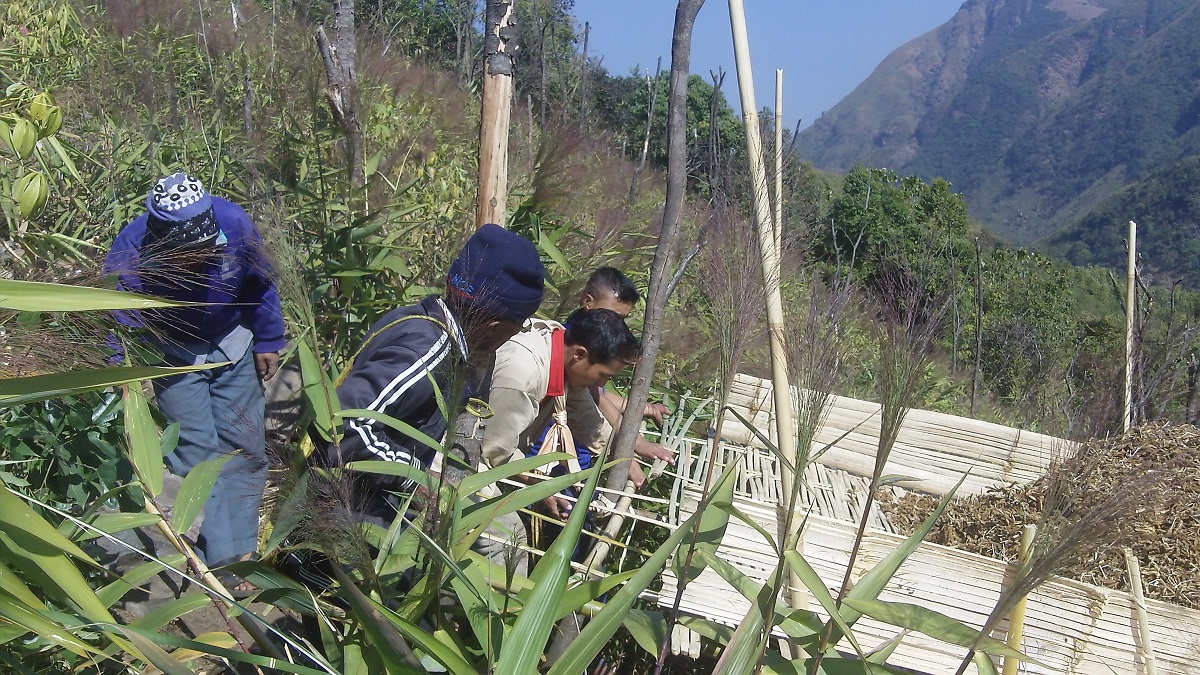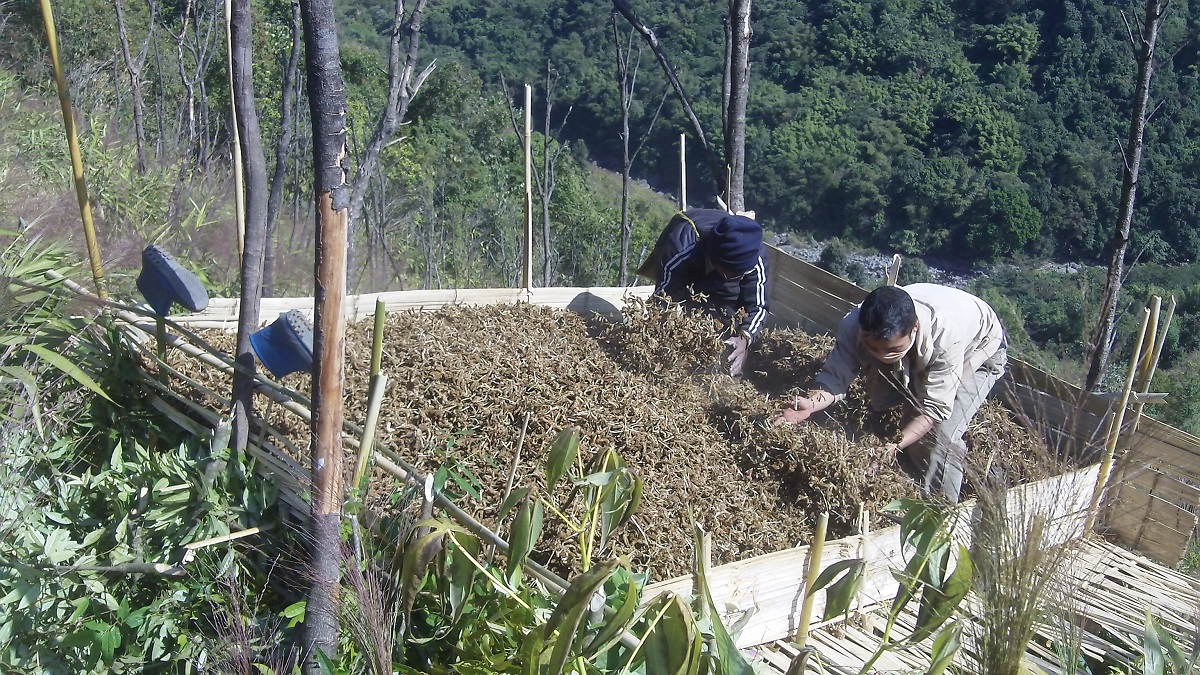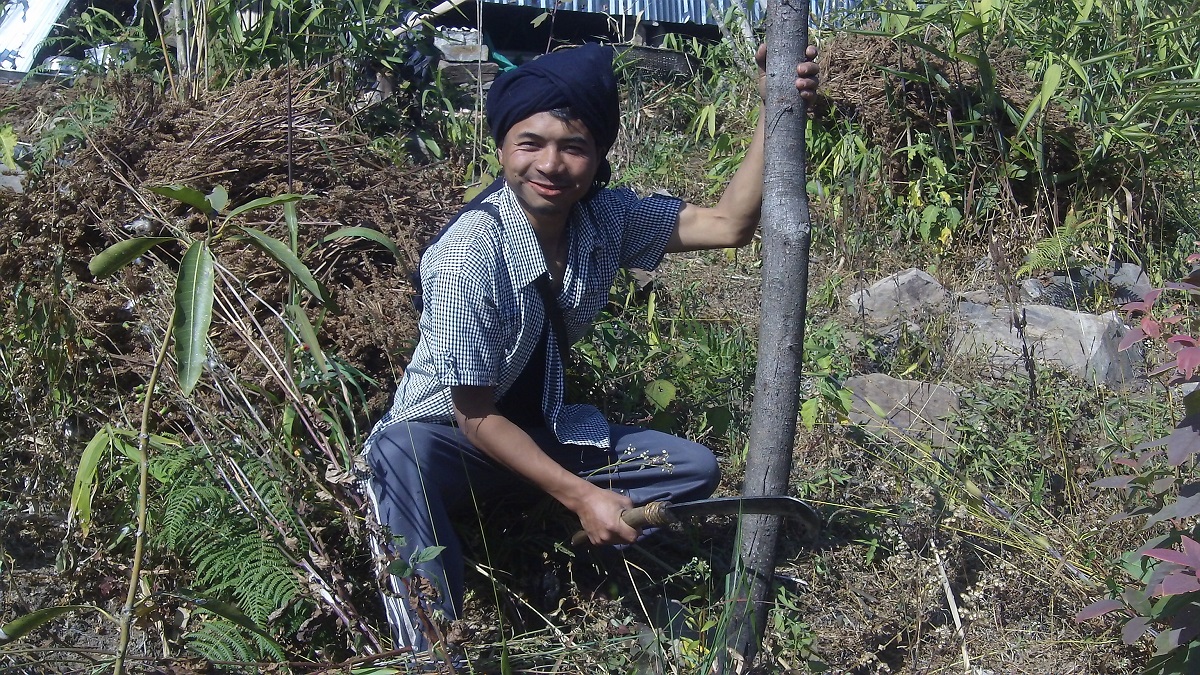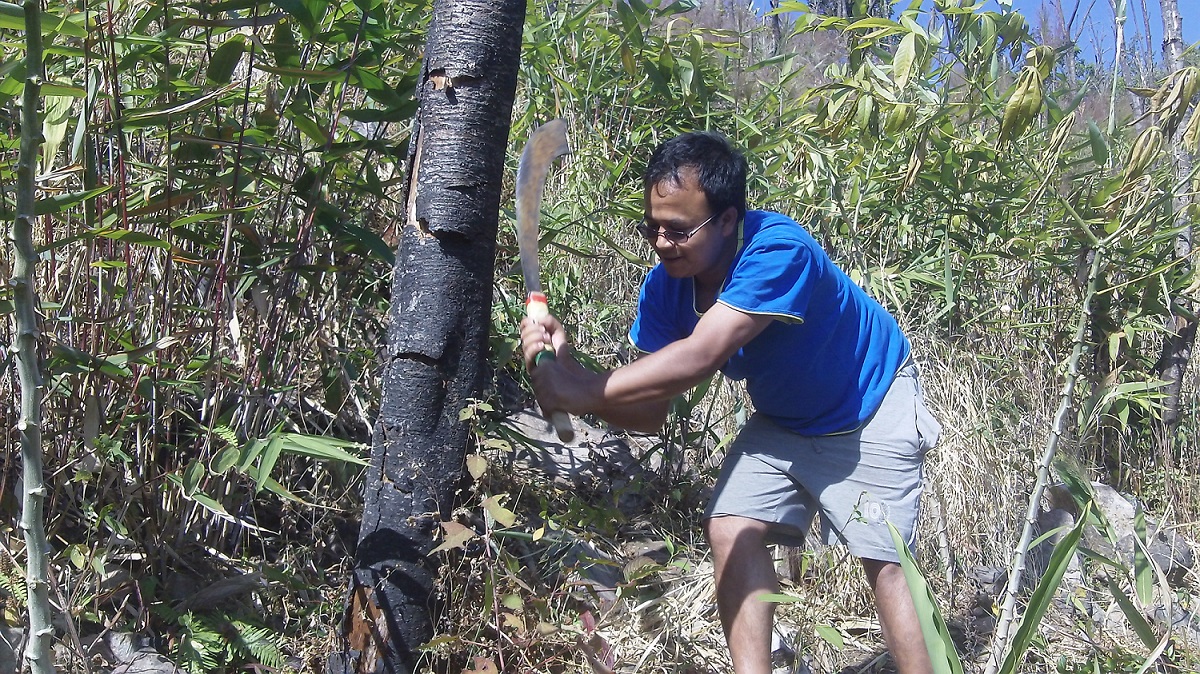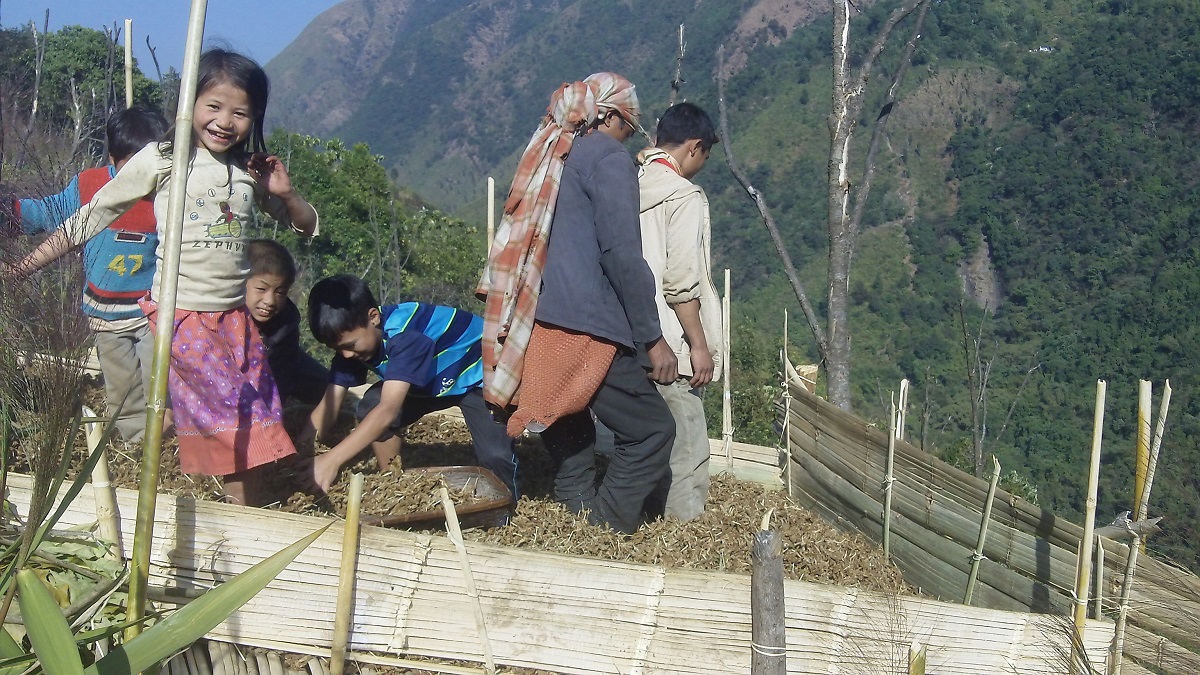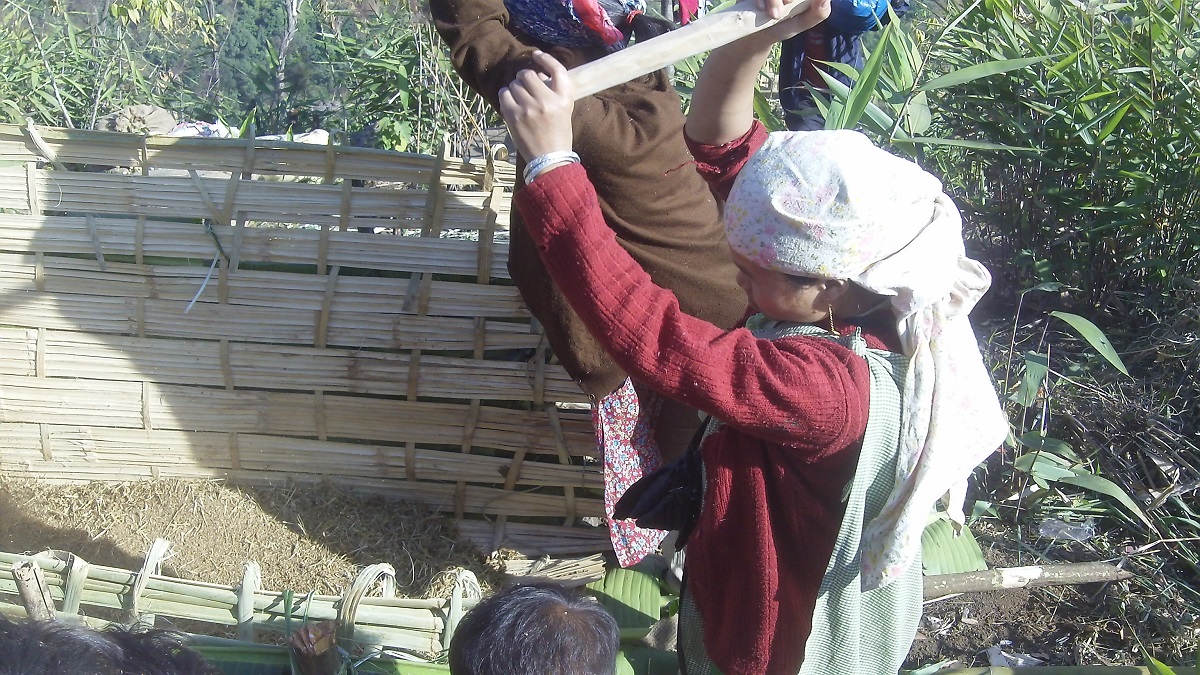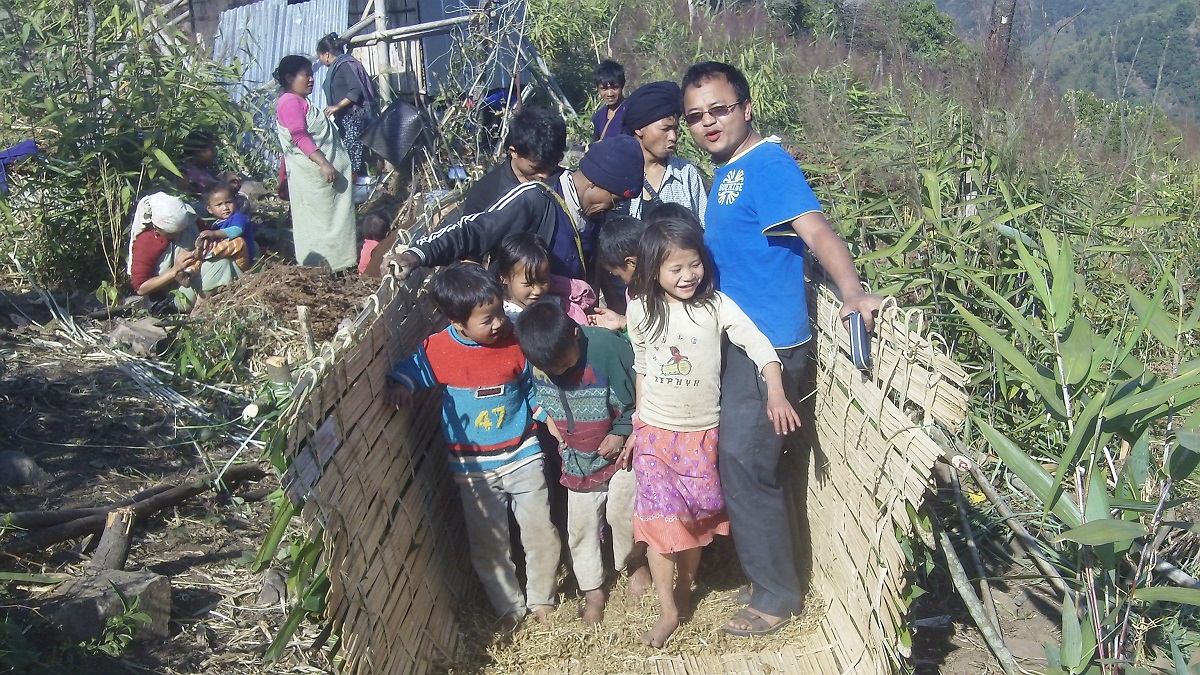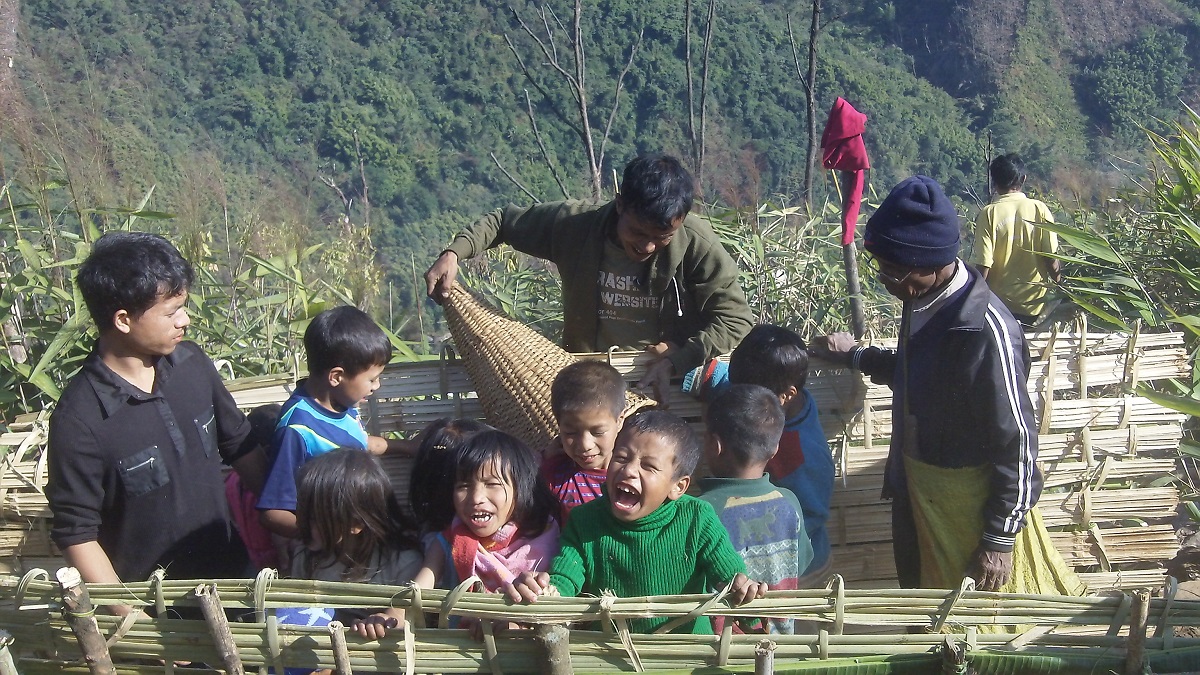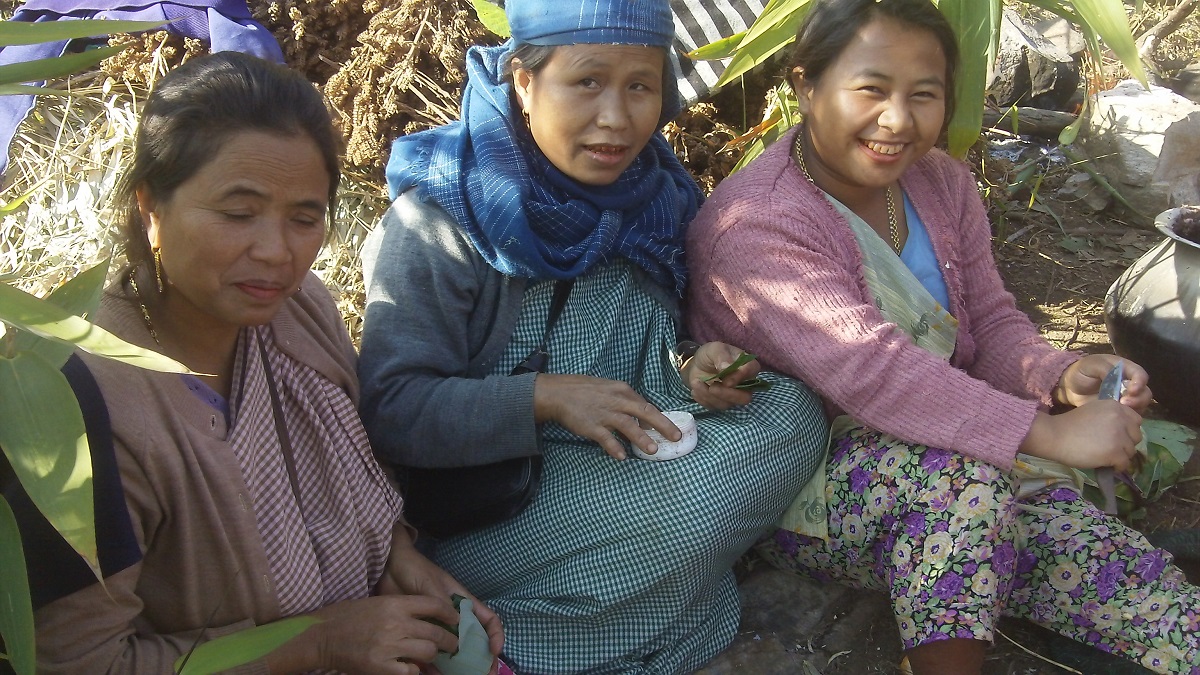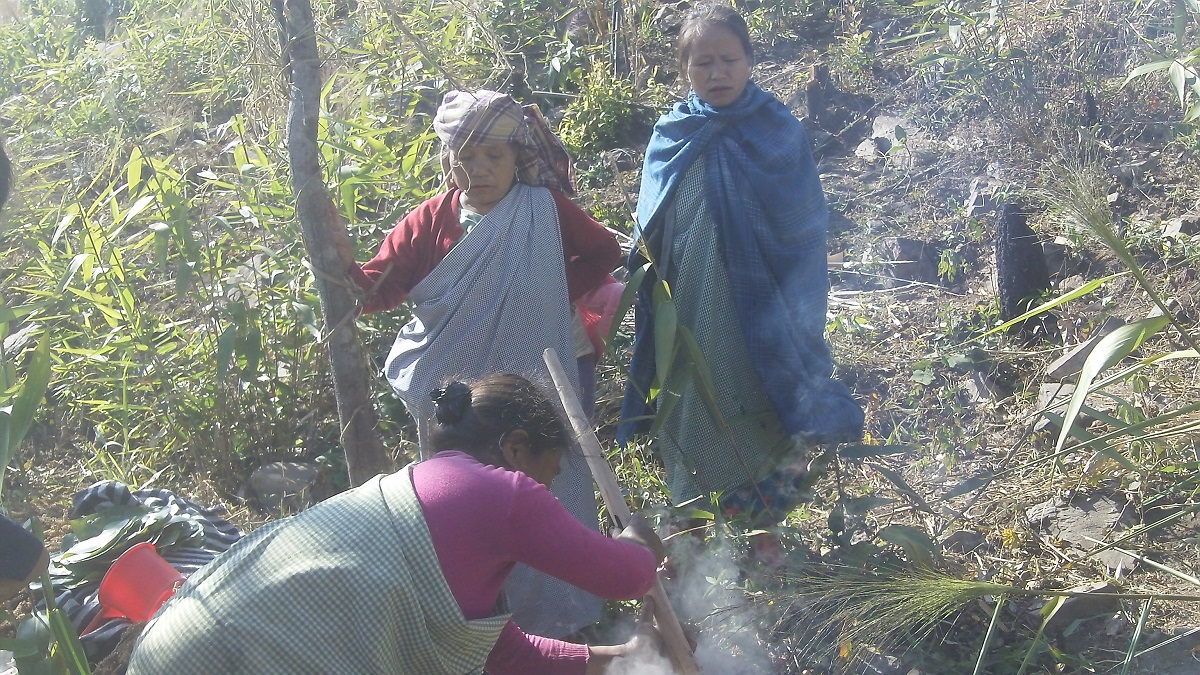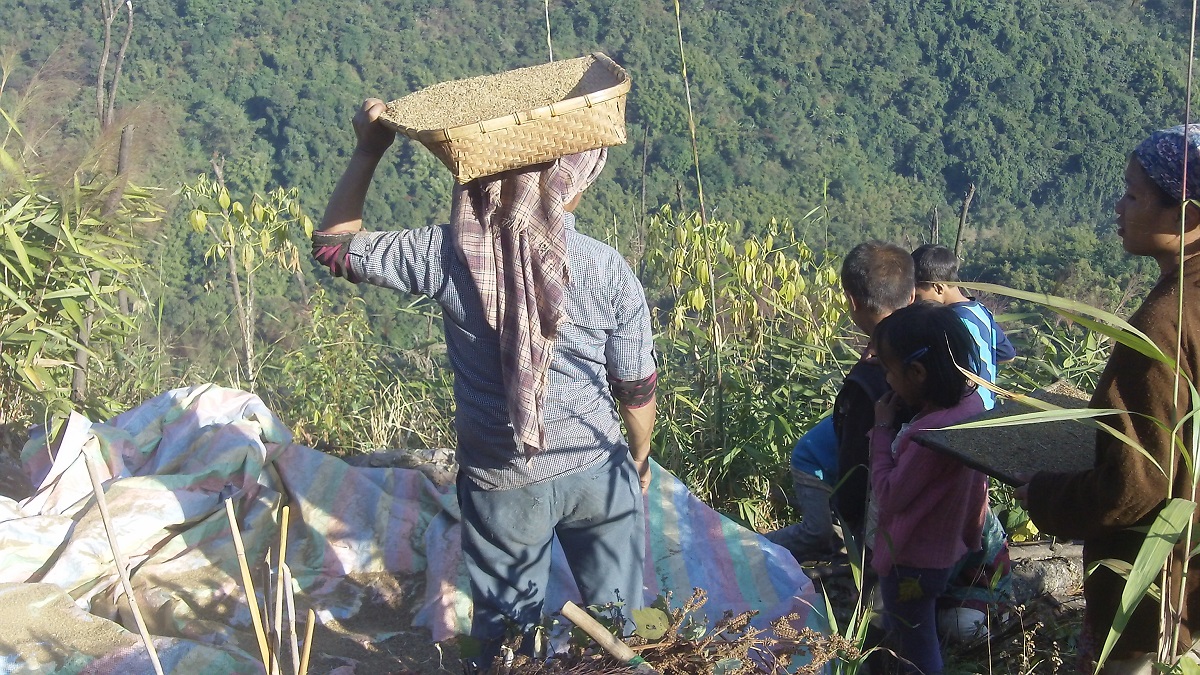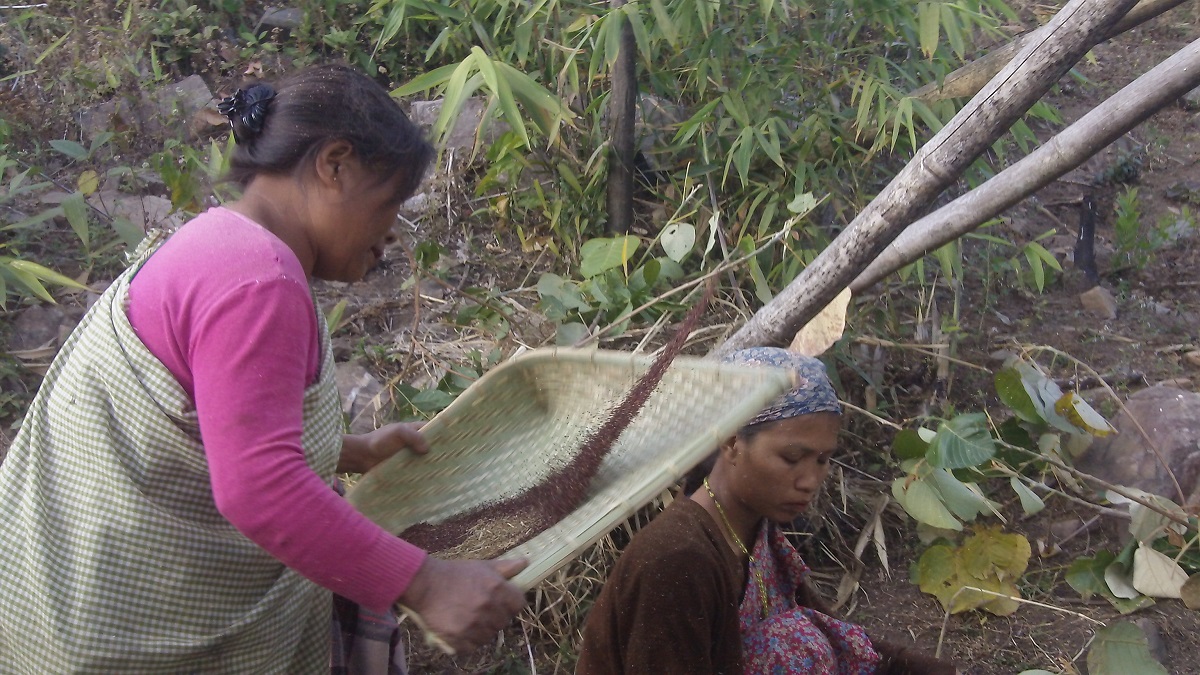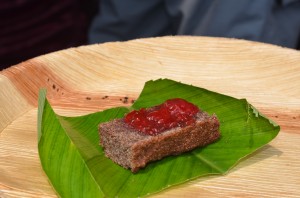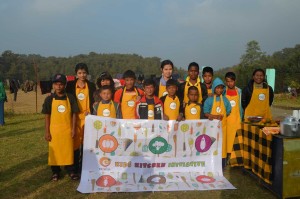The children were the ones having the best time on the 5th of January when the 6 households of the Rani Clan of Nongtraw, Khatarshnong, East Khasi Hills District Meghalaya celebrated the annual Millet Festival. Traditionally celebrated by millet growing communities of the area, the festival was almost forgotten with the decline in the production of the crop. By 2010 only two families grew millet until the first food festival organized by the Indigenous Partnership for Agrobiodiversity and Food Sovereignty where the participating communities decided to revive the crop. This was followed by the documentation of the traditional practice of millet harvesting and processing by The Indigenous Partnership in collaboration with InsighShare based out of London. Over time with encouragement from NESFAS and the community’s own initiative, millet production rose to the point that almost all households grow the crop.
Most of January will see the other clans of Nongtraw celebrate the millet festival with the crops ready to be harvested. The festivity begins with the decision of the elders’ of the clan to harvest the crop followed by the invitation or “iawer” by the clan to other people of the village.
The elders head for the jhum fields where the millet is waiting to be harvested and arrange for the festival by constructing platforms and areas where the millet will be threshed and collecting the right firewood. Meanwhile, the others collect contributions for the meal that will be cooked and shared in the field itself.
Over the last five years, the children and youth learned songs that were almost forgotten. They not only learned the songs but actively took part in preparations and the actual harvesting process.
The millet sheaves are laid on a platform and smoked from underneath with a particular wood found locally to enhance the flavor of the grain. The seeds that escape through gaps of the bamboo platform are later collected and saved for seeds for the next season. The elders know just when to put the process to an end and begin the next which involves threshing the millet with sticks, “pduh krai” or “beat the millet,” by men and women. This is followed by the part that the children enjoy the most – further separation of the seeds by stamping on the millet accompanied by singing.
“Oho …….Oho…… Oho……..
Oho… da…. Koma….. de kai.
Ngi ia bom te ia u krai ( We are pounding the millet)
Ban dup pahuh ka bam kyrhai (In order to get plenty food)”
Meanwhile, the women cook “jakrai” – rice cooked with millet and served with “ktung” – fermented fish chutney.
A hearty meal was followed by a process the children found slightly curious. The men and women select a breezy spot that is ideal for dehusking with the help of the wind. They pour the seeds out from a height and the wind carries the husk away to a further distance. As they do this, they sing a song asking the wind for help. The children chirpily sing along.
“Ko lyer wan uba beit wan uba biang (Oh wind blow with sheer power)
Ban ioh pynkhuid ia une u krai (To clean this millet).
Reported by Pius Ranee, Associate, NESFAS

